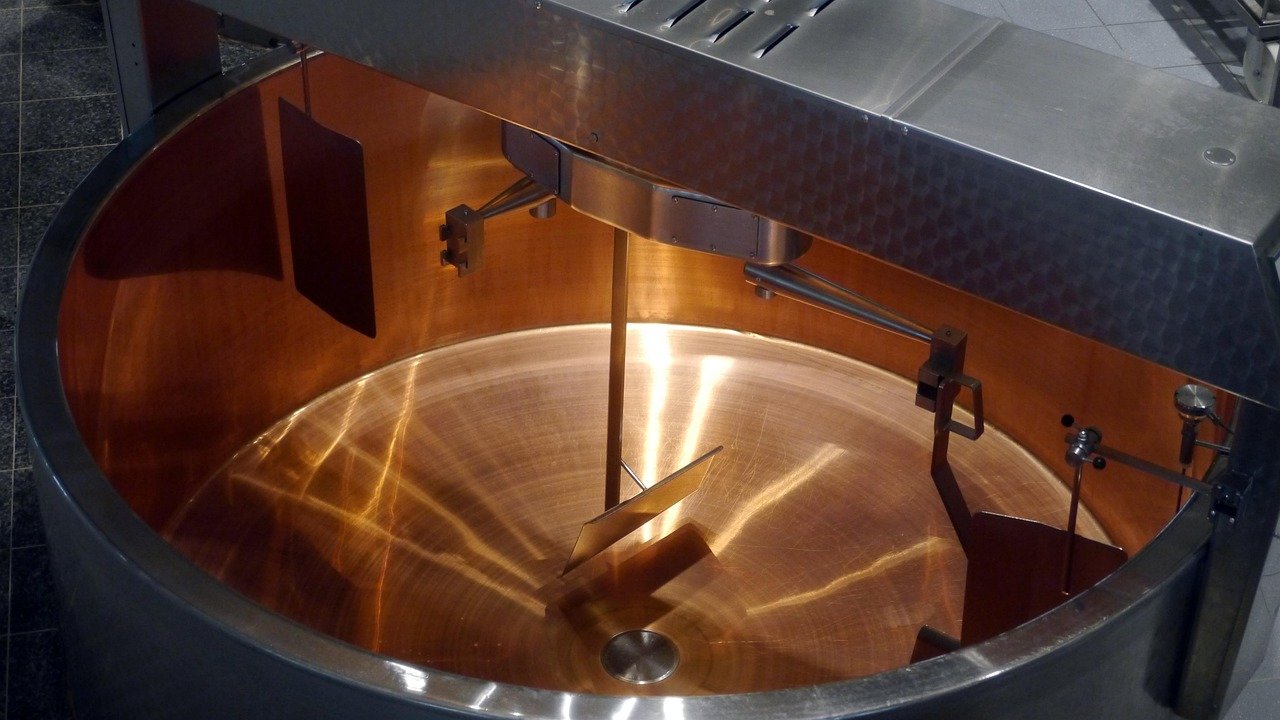Ever wonder how that gleaming KitchenAid, that workhorse Bosch, or that commercial Univex on your countertop or in your bakery actually comes to be? Most of us just plug it in and marvel at its whirring power, utterly oblivious to the symphony of engineering, design, and raw manufacturing muscle that brought it to life.
It’s easy to take them for granted. But I’ve been in this industry for over a decade, and let me tell you, the journey from a coil of raw steel to the sophisticated machine that kneads your dough is a story worth telling. It’s a story that happens in a place most never see: the stand mixer factory.
This isn’t just about assembly lines and robots—though there are plenty of those. It’s about a relentless pursuit of durability, a obsession with torque, and a surprising amount of culinary science. Today, we’re pulling back the curtain. We’re taking a virtual tour of a top-tier stand mixer manufacturing facility to see what separates a cheap impostor from a legacy appliance that might just outlive you.
Table of Contents
- More Than Metal and Motors: The Philosophy of a Quality Factory
- The Anatomy of a Powerhouse: Deconstructing the Core Components
- The Assembly Line: Where the Magic (and Precision) Happens
- From Stamping to Shaping: The Birth of the Housing
- The Heart of the Beast: Motor Assembly and Calibration
- Gears, Giants, and the All-Important Tilt-Head
- Quality Control: The Uncompromising Gatekeeper
- Commercial vs. Home: How Factory Production Diverges
- The Mirabake Perspective: What to Look For in a Factory-Direct Partner
- Frequently Asked Questions
More Than Metal and Motors: The Philosophy of a Quality Factory
Walk into a proper stand mixer factory, and the first thing you’ll notice isn’t the noise—it’s the culture. Is it a place that just slaps parts together to hit a price point? Or is it a place obsessed with the feel of a gear engagement, the perfect balance of a head-lock mechanism, and the harmonic dampening of a motor under load?
Honestly, this isn’t talked about enough. The best factories operate like culinary R&D labs. They employ food scientists who understand protein development in gluten, and mechanical engineers who can translate that need into a specific wattage and gear ratio. They test motors not for minutes, but for hundreds of hours, under load, simulating a lifetime of pizza dough and bagel batter. The goal isn’t to just work; it’s to perform flawlessly, year after year. This philosophical commitment is the single biggest differentiator you can’t see on a spec sheet.
The Anatomy of a Powerhouse: Deconstructing The Core Components
Before we see them come together, let’s break down what we’re actually building. A stand mixer is deceptively simple:
- The Motor: The undeniable heart. We’re talking about DC or AC motors rated in watts, but more importantly, in torque (Newton-meters). A powerful motor that overheats is useless. The best are built with copper windings, quality bearings, and have sophisticated thermal protection.
- The Gearbox: The brawn. This translates the motor’s high-speed, low-torque rotation into the low-speed, high-torque power needed to knead. Planetary gear systems are the gold standard, where the beater rotates around the bowl while spinning on its own axis. The material here is critical—zinc alloy? Stainless steel? This is where cheap models cut corners and why they strip their gears.
- The Housing & Head: The skeleton and joints. This is typically die-cast metal (for durability and weight) or polycarbonate (for cost and lightness). The tilt-head mechanism or bowl-lift design must be robust, seamless, and safe.
- The Bowl and Attachments: The interface with your food. Material (stainless steel vs. glass), shape, and capacity are key. Attachments must lock in securely without wobble.
The Assembly Line: Where the Magic (and Precision) Happens
From Stamping to Shaping: The Birth of the Housing
The process often starts with massive coils of steel or aluminum. These are fed into stamping presses that punch out the basic shapes for the mixer’s body. For higher-end models, the housing might be created through die-casting—forcing molten metal into a mold under high pressure. This creates a single, incredibly strong and precise piece. It’s then deburred, smoothed, and sent to painting or plating. The finish on your mixer isn’t just paint; it’s a powder-coated or electrostatically applied layer that’s baked on for durability.
The Heart of the Beast: Motor Assembly and Calibration
This is a clean-room operation. Motor components—the stator, rotor, armature, and copper wire—are assembled with robotic precision. The windings are layered perfectly to maximize efficiency and minimize heat and vibration. Once assembled, each motor is tested on a rig. They measure amp draw, RPM under various loads, and heat dissipation. A motor that isn’t perfectly balanced will vibrate itself to an early grave—and ruin your soufflé in the process.
Gears, Giants, and the All-Important Tilt-Head
Meanwhile, the gearbox is being assembled. Gears are machined to micron-level tolerances. They’re lubricated with food-grade grease that can withstand a huge temperature range. This entire assembly is then meticulously married to the motor unit. The head mechanism—whether it’s a smooth-tilting hinge or a precise bowl-lift screw—is installed and tested and re-tested for smooth operation and a secure, rattle-free lock.
Quality Control: The Uncompromising Gatekeeper
This is where the rubber meets the road. In a serious factory, QC isn’t a final step; it’s integrated into every single stage. Components are inspected upon arrival. Sub-assemblies are tested before moving down the line.
But the final test is what matters most. Every single finished stand mixer is powered on. They hook it up to a dynamometer to apply a load, testing its torque output. They listen for unusual sounds with acoustic sensors. They check for any vibration. They test every speed setting. They engage and disengage the head dozens of times. They plug in attachments to ensure they spin true.
Some experts might say this level of testing is overkill for a home appliance. But here’s my take: that’s why we have so many broken mixers collecting dust in garages. The factories that don’t cut corners create heirlooms.
Commercial vs. Home: How Factory Production Diverges
It’s a whole different ballgame. While the fundamental process is similar, a factory line for commercial stand mixers is built around one word: endurance.
| Feature | Home Mixer Factory | Commercial Mixer Factory |
|---|---|---|
| Motor Testing | Tested for hours under simulated home use. | Tested for days, often under 100% load continuously. |
| Gear Material | Often zinc alloy or powdered metal. | Almost exclusively hardened steel or cast iron. |
| Housing | Die-cast metal or high-grade plastic. | Heavy-duty die-cast metal or stainless steel. |
| Lubrication | Standard food-grade grease. | High-temp, industrial-grade food-safe grease. |
| QC Focus | Noise, vibration, cosmetic perfection. | Torque output, thermal protection, durability under extreme abuse. |
The commercial line assumes the machine will be used for 8-16 hours a day, every day. The tolerances are tighter, the materials are heavier, and the testing is, frankly, brutal.
The Mirabake Perspective: What to Look For in a Factory-Direct Partner
At Mirabake, we’ve toured dozens of factories across China and the globe. Our job is to cut through the marketing speak and find the facilities that embody that philosophy of quality we talked about earlier. It’s not just about who can offer the lowest price. It’s about partnering with factories that:
- Invest in R&D: They’re not just copying last year’s model; they’re innovating on motor efficiency and user safety.
- Embrace Transparency: The best factories are proud of their process. They’ll show you their QC reports and motor testing data.
- Understand Their Niche: A factory great at making high-volume home models might not be the right partner for a boutique, artisan bakery equipment brand, and vice versa.
When you’re sourcing equipment, you’re not just buying a product; you’re buying the expertise and integrity of the factory that built it.
Frequently Asked Questions
Q1: What is the most important part of a stand mixer?
Without a doubt, it’s the motor and gearbox combination. Wattage is a vanity metric; look for torque ratings (Nm). A powerful motor is useless if it’s connected to a weak gear train that will strip under pressure.
Q2: Are all stand mixers made in the same few factories?
Not exactly. While there is consolidation, numerous factories specialize. Some focus on high-volume consumer brands, others on niche commercial equipment. The manufacturing processes and quality standards can vary wildly between them, even if they’re in the same industrial park.
Q3: What does ‘planetary mixing action’ mean?
This is the hallmark of a good mixer. It means the attachment (beater, whisk) rotates on its own axis while simultaneously rotating around the bowl. This ensures every part of the bowl is scraped and incorporated into the mix, eliminating dead zones.
Q4: Why are some mixers so much heavier than others?
Weight is a great proxy for quality. It usually means a metal (not plastic) housing, a larger, more substantial motor, and a heavier-duty gear system. The weight also helps counter the vibration and force of the mixer itself, keeping it stable on your counter.
Q5: How long should a quality stand mixer last?
A mixer from a quality-focused factory should easily last 10-15 years of regular home use. Commercial models, with their over-engineered components, can last for decades with proper maintenance. It’s an investment.
Q6: Can I get replacement parts for older models from the factory?
This is a key sign of a good factory. They maintain tooling and inventory for parts long after a model is discontinued. Always check the availability of parts like gears, motor brushes, and bowls before investing in a specific brand.
Conclusion: The True Mix of Form and Function
Stepping out of a stand mixer factory, you see these machines differently. You stop seeing a simple appliance and start seeing a meticulously calibrated food tool. It’s a testament to human ingenuity—a device that turns brute force into culinary grace.
The next time you watch your mixer effortlessly whip cream or knead a stubborn dough, remember the incredible journey it took. Remember the precision engineering, the rigorous testing, and the quiet obsession with quality that lives inside that beautiful, durable shell. It’s not just a machine; it’s the end result of a factory’s promise to bring power and perfection to your kitchen.
What’s the one kitchen task you wish your current equipment could handle better? Maybe it’s time to look at what’s behind the specs.
YOU MAY ALSO LIKE: Foenegriek: Your Kitchen’s Secret Spice & Ancient Wellness Ally










